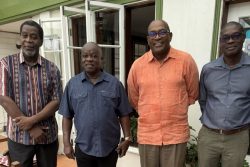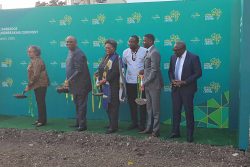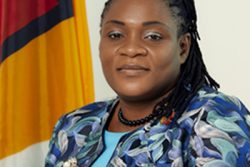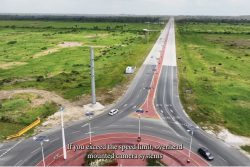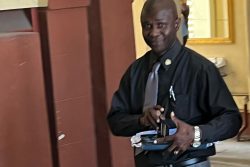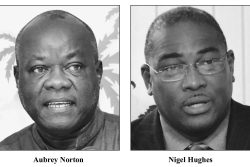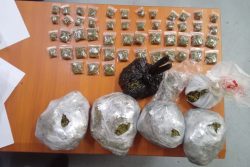The firearm marking machine which was donated by the Organisation of American States (OAS) in 2011 is functioning well, according to Crime Chief Seelall Persaud who said that so far there has been no known case where any of the marked guns have been linked to any crime scenes.
Since the US$10,000 Styliner Mark 3 Dot Peen Marking Machine was placed in the hands of the Guyana Police Force no information has been made public about its successes or failures.
Contacted recently, Persaud told Stabroek News that the piece of equipment was currently in use and had even surpassed its target “by far”. Persaud was unable to provide figures on how many firearms have been marked since the machine became operational.
He disclosed that at some point after it was handed over, there was problem with a part of the machine which resulted in it being out of operation for some time. While not going into detail about what the problem was, he said that because of the process involved it took a long time for it to be fixed. Stabroek News has since learnt that the machine broke down sometime in June last year. During this period many licences were renewed without the firearms being marked.
Persaud explained that the machine is a computerised system which puts markings on firearms.
According to Persaud, the markings allow for the tracing of firearm using a system which is linked to several Caribbean and Latin American countries.
Asked if any of the registered weapons have been linked to any crimes, he said “not so far…”.
Meanwhile, a source with some knowledge about the machine told this newspaper that the machine puts markings in the form of a number on the firearms. It was explained that once a licensed firearm holder goes to the police to have his/her weapon’s licence renewed, the firearm is marked. Stabroek News was told that all firearms licences have to be renewed within a specified time frame.
“If you want you can get around that process because the criminals aren’t going to go and register their guns,” the source said, adding that not much is being said about the work the machine is doing. Given the large amount of firearms around the country, it is not clear if the use of this machine makes sense.
The source explained that a firearm has to be linked to a crime scene by way of empty casings or warheads. Without the existence of either of those things, the source said, the weapon cannot be placed at a crime scene.
To date, a total of 25 countries in the region have signed a cooperation agreement with the OAS to participate in a programme aimed at halting illicit arms trafficking. Those countries are Argentina, Antigua and Barbuda, Barbados, Belize, Costa Rica, Dominica, the Dominican Republic, Ecuador, El Salvador, Grenada, Guatemala, Guyana, Haiti, Honduras, Jamaica, Uruguay, Panama, Paraguay, Peru, Saint Lucia, Saint Kitts and Nevis, Saint Vincent and the Grenadines, Suriname, the Bahamas, and Trinidad and Tobago. Suriname is the last to join having signed on earlier this year. Initially 30 countries were to have signed onto the agreement.
Guyana and the OAS signed an agreement in Washington in September to promote firearms marking, as part of the Inter-American Convention Against Illicit Manufacturing of and Tra-fficking in Firearms (CIFTA).
At the simple handing over ceremony, Home Affairs Minister Clement Rohee had said that the gift will go a far way in helping law enforcement in Guyana and warned all gunrunners that the newly acquired piece of equipment will help the police to trace the illegal firearms that are used in the commission of a crime or in attempting to commit a crime in Guyana.
He had stated that Guyana will work with international partners in the project in sharing and gathering the relevant information.
Based on what reporters had been told back then the weapons would be permanently marked with identifiable information such as serial number, name and place of manufacture, model and calibre. An OAS officer was to have travelled to Guyana to provide the necessary training for the operation of the equipment as well as a laptop computer for proper recordkeeping of the firearms marked.
Through this programme it is expected that tens of thousands of firearms will be marked throughout the hemisphere and that all member states will have effective policies and legislation in place to support the initiative.
Based on the checks made by Stabroek News there is very little information circulating on the work of the machines in the respective countries. In October, 2011 Bahamas’ National Security Minister Tommy Turnquest had said that 361 illegal guns have been marked and taken off the streets with the police force’s new firearms marking machine.
Turnquest, according to media reports, said “firearms marking is an important tool in combating crime. On a daily basis a dedicated team at the police force’s armory is utilising the firearms marking machine to mark recovered and confiscated weapons. We are very pleased with the work being done in this regard to properly mark and destroy illegal weapons, in conformity with international conventions.” OAS has donated the machine in July of that same year.

